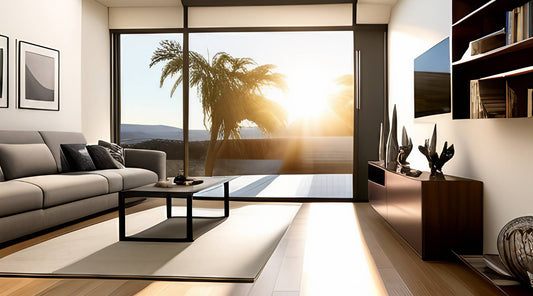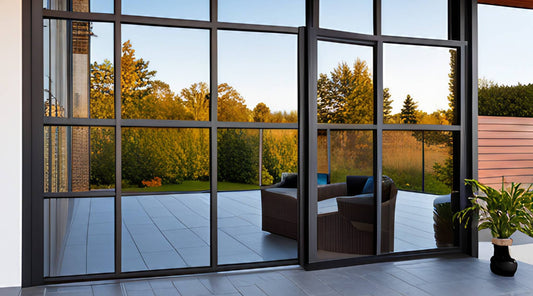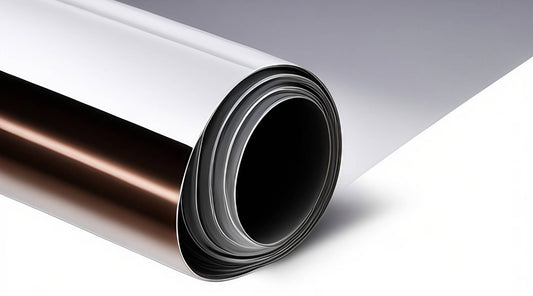Choosing the right window film can transform a space. It enhances aesthetics and boosts energy efficiency. For interior designers, this is a game-changer.
Window films offer numerous benefits, providing a stylish, eco-friendly solution. They reduce energy bills while complementing interior designs. This makes them an attractive option for clients.
Understanding the cost of window films is crucial. It involves considering factors like type, quality, and installation. These elements influence the overall expense.
Professional installation vs. DIY ensures a flawless finish. However, it may add to the cost. DIY options exist but might not match professional quality.
This article explores cost considerations in choosing window films. It aims to guide interior designers in making informed decisions.
Why Window Films Are a Smart Choice for Interior Designers
Window films offer numerous benefits for enhancing spaces. They balance style with function, making them ideal for designers. This dual advantage appeals to both aesthetics and practicality.
These films are versatile and customizable. Designers can choose from various styles to match any interior. Whether decorative or functional, the possibilities are endless.
Key benefits include:
- Enhanced aesthetics with diverse design options
- Improved energy efficiency through better insulation
- UV protection for interior furnishings
By including window films, designers can achieve eco-friendly designs. This approach not only appeals to sustainability-conscious clients but also contributes to long-term energy savings.
Key Factors Influencing the Cost of Window Films
Understanding what influences the cost of window films is crucial. Prices vary based on several key factors, each impacting the overall budget for a project.
Firstly, the type of window film chosen plays a significant role. Decorative films typically cost differently than energy-efficient films. Each serves distinct purposes, affecting the cost structure.
Secondly, quality and brand can affect pricing. Higher quality films from reputable brands often come with a price premium. However, they also ensure durability and long-lasting performance.
Moreover, installation complexity impacts costs. Larger windows or intricate designs require more skilled labor, thus increasing expenses.
Consider these key cost factors:
- Type of film: Decorative vs. energy-efficient
- Quality and brand reputation
- Installation complexity and size
Regional price differences also matter, reflecting local market conditions and availability. It's essential for designers to budget accurately by understanding these factors and their combined effect on the cost of window films.
Comparing Types of Window Films and Their Price Ranges
Choosing the right type of window film can influence both aesthetics and cost. Each type offers unique benefits, catering to different needs and budgets.
Decorative window films usually range from $6 to $13 per square foot. These films enhance style and privacy, offering a cost-effective alternative to traditional treatments like drapes or blinds.
Energy-efficient window films, priced between $5 and $12 per square foot, focus on reducing energy consumption. They provide excellent insulation, lowering heating and cooling expenses significantly.
UV protection films, generally costing between $7 and $14 per square foot, safeguard interiors from harmful rays. This protection extends the life of furnishings, preventing fading and damage.
Consider these types and their costs:
- Decorative Films: $6 to $13 per sq. ft.
- Energy-Efficient Films: $5 to $12 per sq. ft.
- UV Protection Films: $7 to $14 per sq. ft.
by Danist Soh (https://unsplash.com/@danist07)
Thus, selecting the appropriate film type involves balancing cost with the functional and aesthetic needs of the project.
Professional Installation vs. DIY: What to Expect in Cost and Quality
Deciding between professional installation and a DIY approach can impact both your budget and the project's outcome. Each option offers distinct advantages that meet different needs and expectations.
Professional installation ensures precision and durability but comes with added costs. Experts charge for their skills, typically adding $2 to $6 per square foot to the film's base price.
On the other hand, DIY window film kits are affordable, catering to budget constraints. These kits average around $1 to $5 per square foot but might result in uneven application or shorter film lifespan.
Weigh these considerations when choosing between professional and DIY:
- Professional: Higher cost, expert finish
- DIY: Lower cost, potential for errors
by Pierre Châtel-Innocenti (https://unsplash.com/@chatelp)
Ultimately, while DIY methods save money upfront, professional installations often provide superior, lasting quality.
Regional Variations and Project-Specific Window Tinting Rates
Window tinting rates can differ based on location and specific project demands. Local labor costs and regional climate influence pricing, affecting the overall investment required.
In warmer regions, demand for heat-reducing films may increase prices. Conversely, areas with cooler climates might see lower rates due to reduced demand. It's essential to research local professionals for accurate quotes tailored to your project's specifics.
Consider these factors impacting rates:
- Local climate and demand
- Installation complexity and size
- Desired film features (e.g., UV protection, energy efficiency)
Understanding these elements helps ensure you budget effectively for your window film project.
Long-Term Value: Energy Savings, Durability, and ROI
Investing in window films offers exceptional long-term value. Heat-blocking films can lead to substantial savings on energy bills by improving insulation. These films reduce the need for heating and cooling, making them a financially wise choice.
Moreover, window films enhance durability and lifespan. With proper maintenance, window films last from 5 to 20 years. This longevity ensures a stable return on investment while offering prolonged protection for interior furnishings.
When considering the value proposition, think about:
- Significant energy cost reduction
- Longevity and minimal upkeep
- Increased property value and appeal
by Markus Spiske (https://unsplash.com/@markusspiske)
By choosing the right window film, designers can offer clients both cost savings and improved home aesthetics.
Tips for Selecting the Right Window Film for Your Project
Choosing the perfect window film involves careful consideration of various factors. Understanding the specific needs of your space is crucial. Begin by assessing the purpose—whether it's for energy savings, privacy, or decoration.
Next, consider the style and design. Window films are available in a plethora of patterns and colors. This allows you to match them seamlessly with the interior decor. Tailor your choice to enhance the room's existing aesthetics.
Evaluate additional features that might be beneficial. Some films offer added security window film, shatter resistance, and UV protection. Remember to weigh these options based on client priorities.
Key tips for selection include:
- Determine project needs and goals
- Align the film style with interior design
- Consider additional protective features
by Ana Paula Izurieta (https://unsplash.com/@anapaulai)
By following these tips, you can select a window film that perfectly complements your project while meeting budgetary constraints.
Balancing Style, Function, and Cost
Selecting the right window film requires balancing style, function, and cost. It's crucial to align your choices with the project's objectives and budget constraints. Interior designers must weigh all aspects to ensure their clients' satisfaction.
Remember that window films offer a unique blend of aesthetic enhancement and functional benefits. They can elevate interior spaces while improving energy efficiency. By carefully considering all factors, you can offer solutions that delight clients and boost their home's value. Learn more about window films as a versatile and sustainable option for modern home designs.










